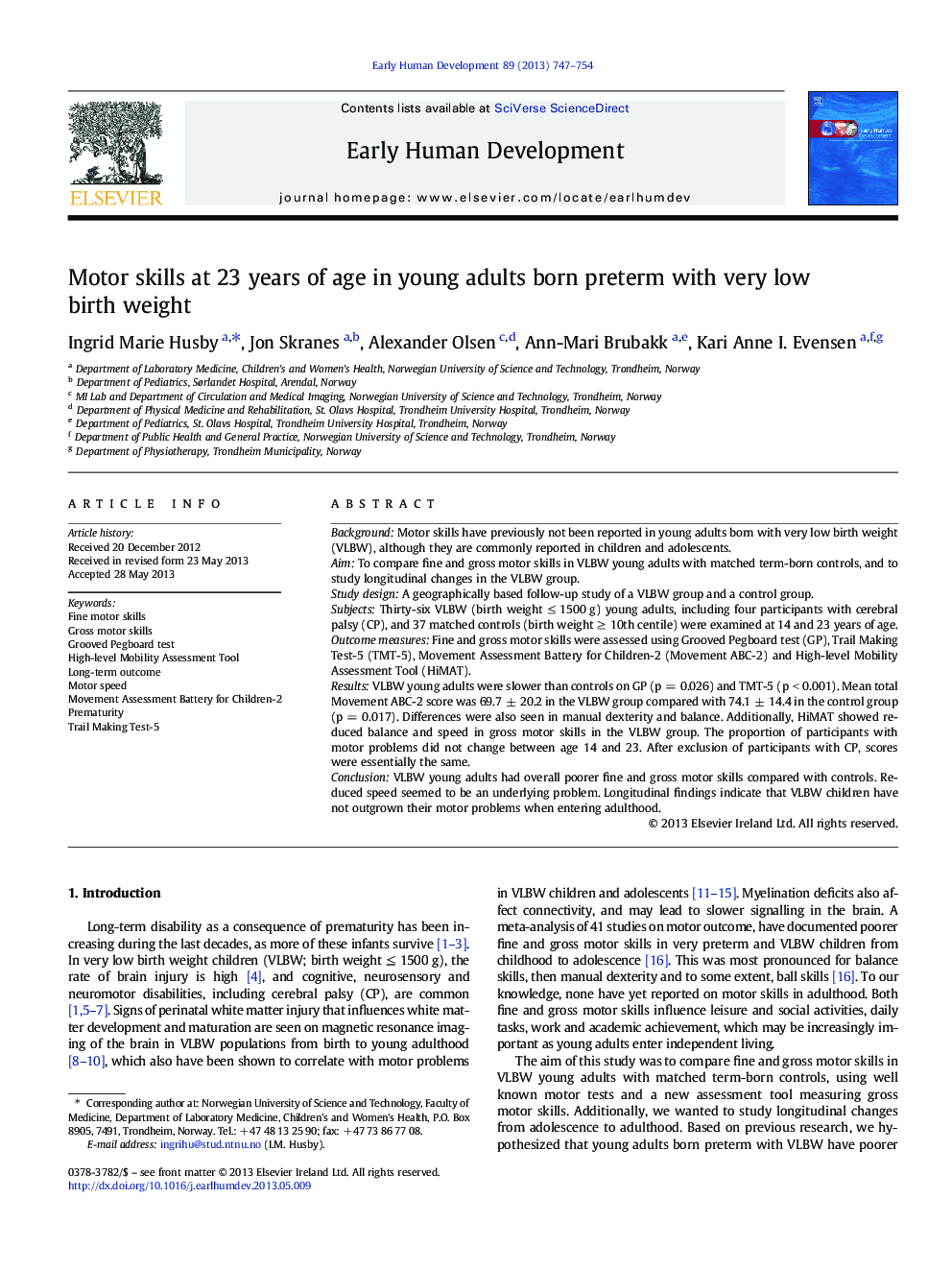| Article ID | Journal | Published Year | Pages | File Type |
|---|---|---|---|---|
| 6172324 | Early Human Development | 2013 | 8 Pages |
BackgroundMotor skills have previously not been reported in young adults born with very low birth weight (VLBW), although they are commonly reported in children and adolescents.AimTo compare fine and gross motor skills in VLBW young adults with matched term-born controls, and to study longitudinal changes in the VLBW group.Study designA geographically based follow-up study of a VLBW group and a control group.SubjectsThirty-six VLBW (birth weight â¤Â 1500 g) young adults, including four participants with cerebral palsy (CP), and 37 matched controls (birth weight â¥Â 10th centile) were examined at 14 and 23 years of age.Outcome measuresFine and gross motor skills were assessed using Grooved Pegboard test (GP), Trail Making Test-5 (TMT-5), Movement Assessment Battery for Children-2 (Movement ABC-2) and High-level Mobility Assessment Tool (HiMAT).ResultsVLBW young adults were slower than controls on GP (p = 0.026) and TMT-5 (p < 0.001). Mean total Movement ABC-2 score was 69.7 ± 20.2 in the VLBW group compared with 74.1 ± 14.4 in the control group (p = 0.017). Differences were also seen in manual dexterity and balance. Additionally, HiMAT showed reduced balance and speed in gross motor skills in the VLBW group. The proportion of participants with motor problems did not change between age 14 and 23. After exclusion of participants with CP, scores were essentially the same.ConclusionVLBW young adults had overall poorer fine and gross motor skills compared with controls. Reduced speed seemed to be an underlying problem. Longitudinal findings indicate that VLBW children have not outgrown their motor problems when entering adulthood.
